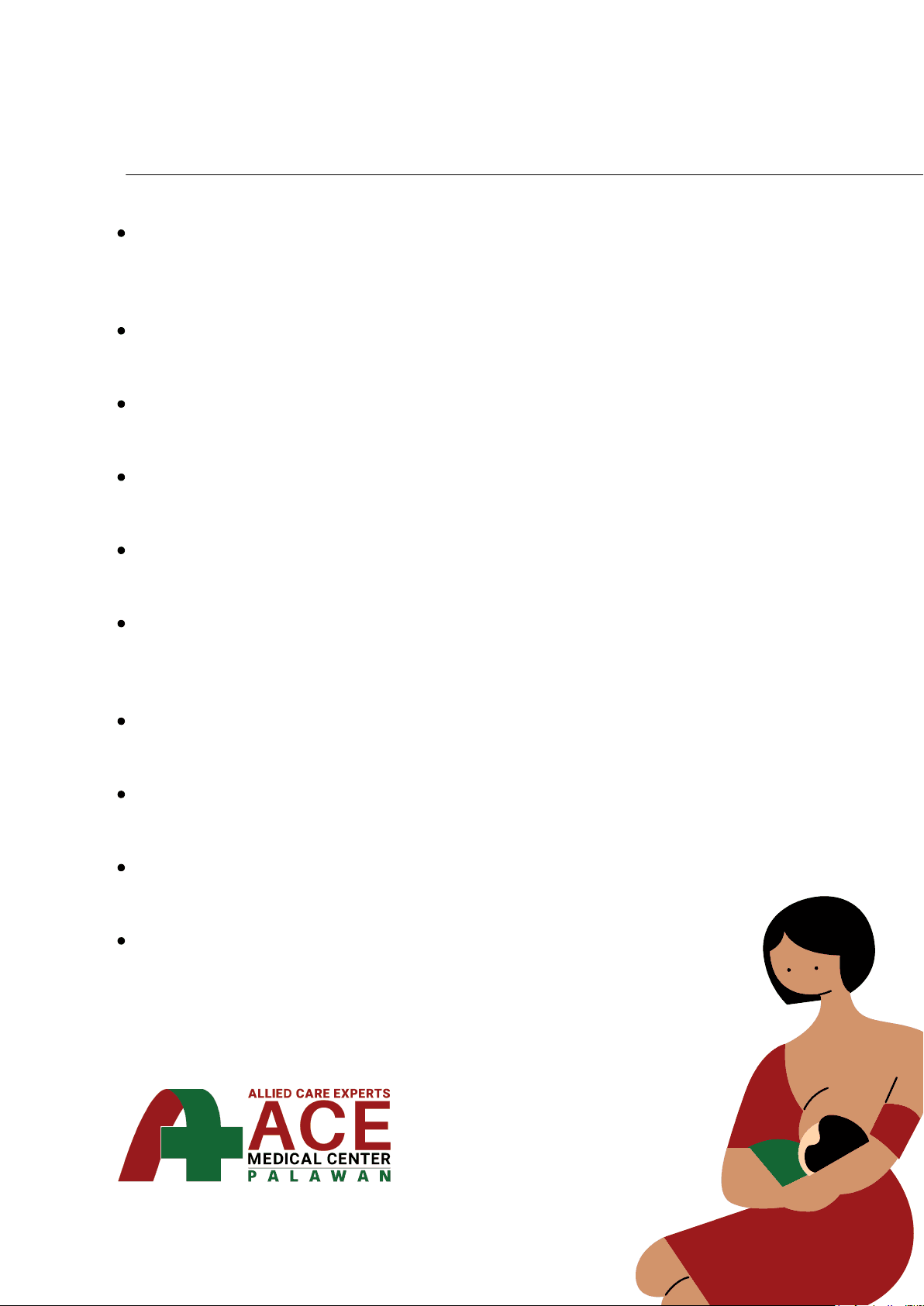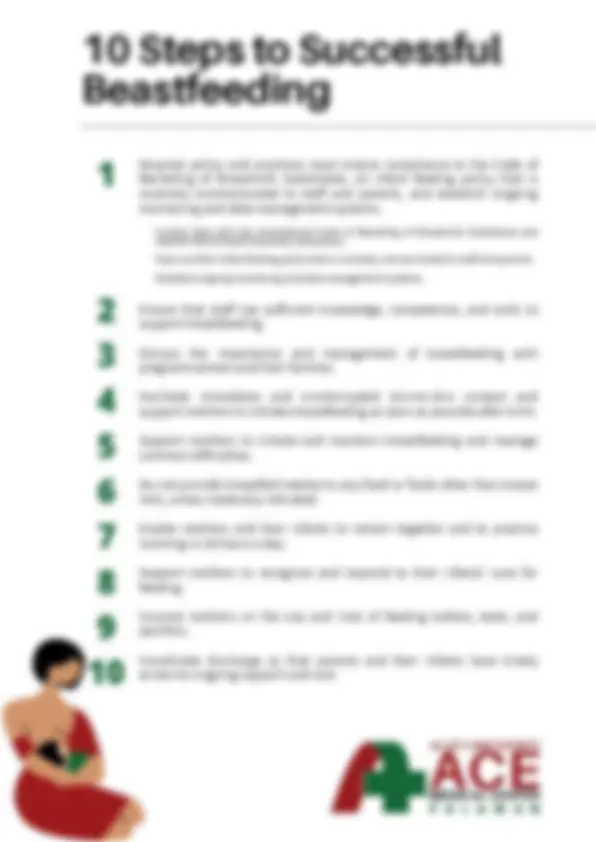



Study with the several resources on Docsity

Earn points by helping other students or get them with a premium plan


Prepare for your exams
Study with the several resources on Docsity

Earn points to download
Earn points by helping other students or get them with a premium plan
Community
Ask the community for help and clear up your study doubts
Discover the best universities in your country according to Docsity users
Free resources
Download our free guides on studying techniques, anxiety management strategies, and thesis advice from Docsity tutors
Breastfeeding Policy and Protocol for OB Gyne Ward
Typology: Lecture notes
1 / 2

This page cannot be seen from the preview
Don't miss anything!


To promote breastfeeding in the hospital by having a written policy based on the 10 steps and ensure compliance to the Code of Marketing of Breastmilk Substitutes. All health workers must be trained in Lactation Management and Essential Newborn Care and be an advocate. Provide prenatal counseling on the benefits of breastfeeding to all pregnant women and their husbands and families. Practice skin to skin upon delivery for 60-90 minutes, baby on the chest of the mother, father, or any family member. Facilitate rooming-in for continuous and uninterrupted breastfeeding. Prioritize breastfeeding or giving of sterile expressed breastmilk from the mother and properly screened donor and no other milk substitutes unless medically indicated. Provide empathy and support to breastfeeding mothers at times of difficulty and at this time of the pandemic. Encourage mothers to be responsive in breastfeeding their infants. Explain to the mother and family the risks of using feeding bottles, teats, and pacifiers; and practice cup feeding, instead Follow up discharge mothers, 2-4 days after delivery and refer to the local breastfeeding support group to maintain exclusive breastfeeding until 6 months of age and with complementary feeding up to 2 years of age and beyond.
Hospital policy and practices must ensure compliance to the Code of Marketing of Breastmilk Substitutes, an infant feeding policy that is routinely communicated to staff and parents, and establish ongoing monitoring and data-management systems. Ensure that staff has sufficient knowledge, competence, and skills to support breastfeeding. Discuss the importance and management of breastfeeding with pregnant women and their families. Facilitate immediate and uninterrupted skin-to-skin contact and support mothers to initiate breastfeeding as soon as possible after birth. Support mothers to initiate and maintain breastfeeding and manage common difficulties. Do not provide breastfed newborns any food or fluids other than breast milk, unless medically indicated. Enable mothers and their infants to remain together and to practice rooming-in 24 hours a day. Support mothers to recognize and respond to their infants’ cues for feeding. Counsel mothers on the use and risks of feeding bottles, teats, and pacifiers. Coordinate discharge so that parents and their infants have timely access to ongoing support and care. Comply fully with the International Code of Marketing of Breastmilk Substitutes and relevant World Health Assembly resolutions. Have a written infant feeding policy that is routinely communicated to staff and parents. Establish ongoing monitoring and data-management systems.